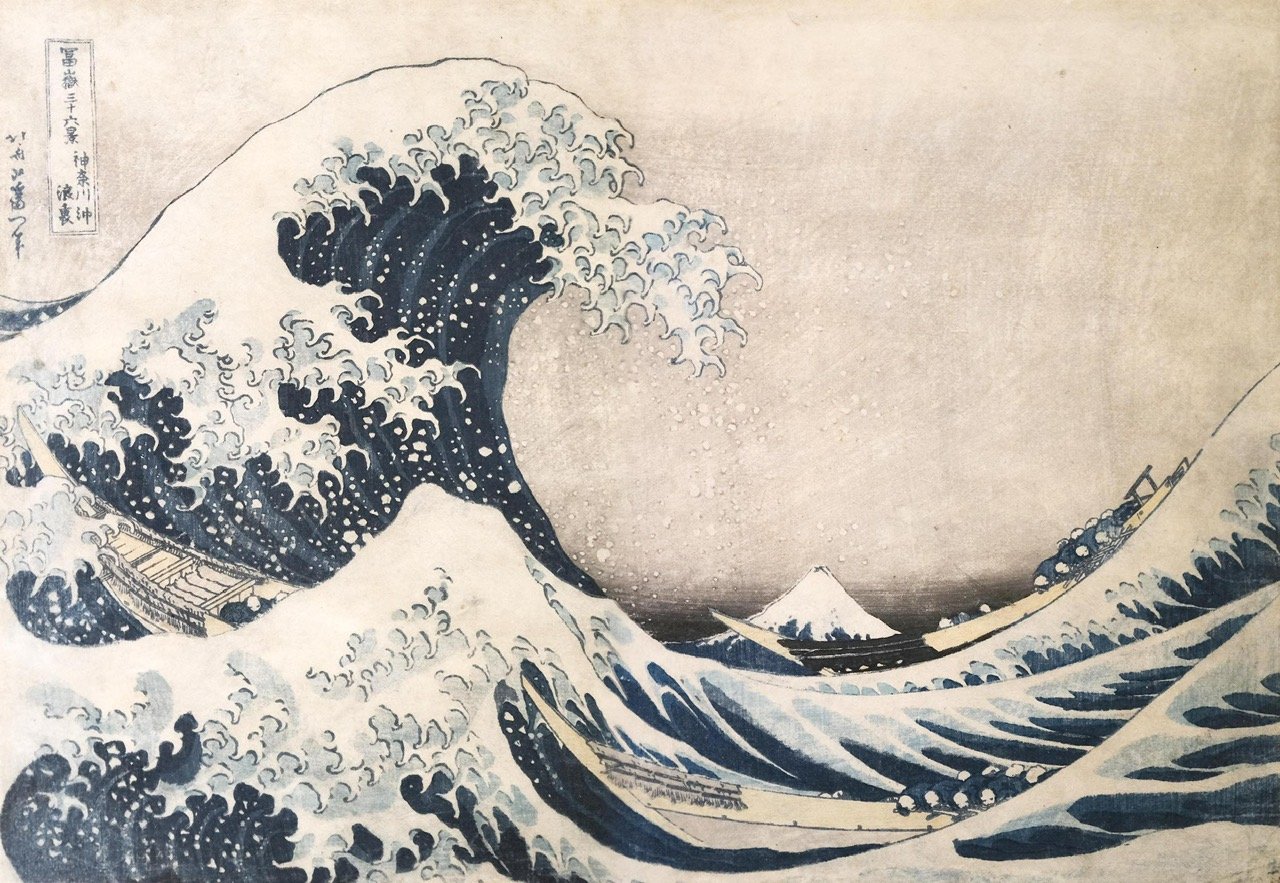Katsushika Hokusai
Edo (Tokyo), October 1760 - Edo, May 10, 1849

Hokusai was born in the Honjo district, in the eastern part of Edo (now Tokyo), in October 1760. At the age of fifteen, he was employed in an engraver’s workshop, and in 1778, upon turning eighteen, he became a pupil of Katsukawa Shunshō, one of the leading artists of the Ukiyo-e (pictures of the floating world) movement of which Hokusai would become the most important innovator.
In his early thirties, Hokusai faced significant changes in both his private and artistic life. In 1793, the artist’s first wife died, and Shunshō, the master he had relied on for many years, also passed away. In 1797, he remarried and adopted the name Hokusai, meaning studio of the North Star: this new name marked the beginning of the most prolific period of his career.
In the 1820s, he began his most famous print series, such as the Thirty-Six Views of Mount Fuji (1826-1833), Famous Waterfalls in Various Provinces, Views of Famous Bridges, and around 1830, he started working on the famous Shashinkio Ghosts, a series of ten large prints.
The Great Wave off Kanagawa at Palazzo Maffei Casa Museo is part of the woodblock print collection called the Thirty-Six Views of Mount Fuji, published in Japan from 1830. The relationship and tensions between man and nature are depicted by the artist through this tempestuous wave threatening to destroy the fishermen’s boats. According to Eastern philosophy, the wave symbolizes the masculine (yang) or feminine (yin) depending on its direction; waves also symbolize the passage of time with their rhythm and perpetual movement. The Great Wave influenced several prominent European artists such as Edgar Degas (1834-1917), Vincent van Gogh (1853-1890), Émile Gallé (1846-1904), and even musicians like Claude Debussy (1862-1918), who was deeply inspired by it for his symphonic composition La Mer (1903-1905). The musician was so inspired and moved that he used the Great Wave for the cover image of the score.
Hokusai continued to paint until the last days of his life and stated, in one of his last written testimonies, that If Heaven grants me another ten years… even five more years, I could become a real artist.
Hokusai died in May 1849, at the age of eighty-nine.